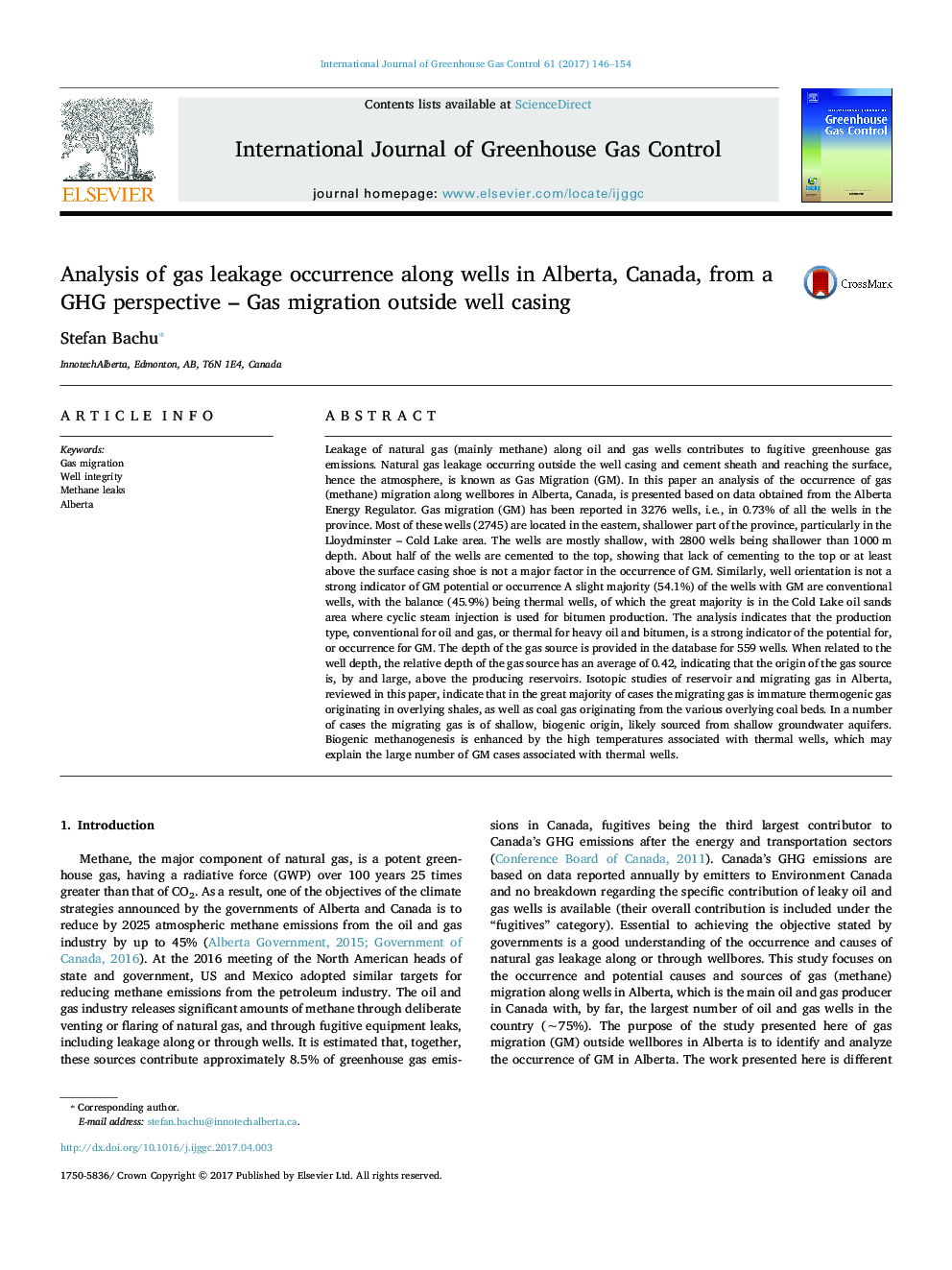| کد مقاله | کد نشریه | سال انتشار | مقاله انگلیسی | نسخه تمام متن |
|---|---|---|---|---|
| 5478963 | 1521958 | 2017 | 9 صفحه PDF | دانلود رایگان |
عنوان انگلیسی مقاله ISI
Analysis of gas leakage occurrence along wells in Alberta, Canada, from a GHG perspective - Gas migration outside well casing
دانلود مقاله + سفارش ترجمه
دانلود مقاله ISI انگلیسی
رایگان برای ایرانیان
موضوعات مرتبط
مهندسی و علوم پایه
علوم زمین و سیارات
فرآیندهای سطح زمین
پیش نمایش صفحه اول مقاله

چکیده انگلیسی
Leakage of natural gas (mainly methane) along oil and gas wells contributes to fugitive greenhouse gas emissions. Natural gas leakage occurring outside the well casing and cement sheath and reaching the surface, hence the atmosphere, is known as Gas Migration (GM). In this paper an analysis of the occurrence of gas (methane) migration along wellbores in Alberta, Canada, is presented based on data obtained from the Alberta Energy Regulator. Gas migration (GM) has been reported in 3276 wells, i.e., in 0.73% of all the wells in the province. Most of these wells (2745) are located in the eastern, shallower part of the province, particularly in the Lloydminster - Cold Lake area. The wells are mostly shallow, with 2800 wells being shallower than 1000Â m depth. About half of the wells are cemented to the top, showing that lack of cementing to the top or at least above the surface casing shoe is not a major factor in the occurrence of GM. Similarly, well orientation is not a strong indicator of GM potential or occurrence A slight majority (54.1%) of the wells with GM are conventional wells, with the balance (45.9%) being thermal wells, of which the great majority is in the Cold Lake oil sands area where cyclic steam injection is used for bitumen production. The analysis indicates that the production type, conventional for oil and gas, or thermal for heavy oil and bitumen, is a strong indicator of the potential for, or occurrence for GM. The depth of the gas source is provided in the database for 559 wells. When related to the well depth, the relative depth of the gas source has an average of 0.42, indicating that the origin of the gas source is, by and large, above the producing reservoirs. Isotopic studies of reservoir and migrating gas in Alberta, reviewed in this paper, indicate that in the great majority of cases the migrating gas is immature thermogenic gas originating in overlying shales, as well as coal gas originating from the various overlying coal beds. In a number of cases the migrating gas is of shallow, biogenic origin, likely sourced from shallow groundwater aquifers. Biogenic methanogenesis is enhanced by the high temperatures associated with thermal wells, which may explain the large number of GM cases associated with thermal wells.
ناشر
Database: Elsevier - ScienceDirect (ساینس دایرکت)
Journal: International Journal of Greenhouse Gas Control - Volume 61, June 2017, Pages 146-154
Journal: International Journal of Greenhouse Gas Control - Volume 61, June 2017, Pages 146-154
نویسندگان
Stefan Bachu,